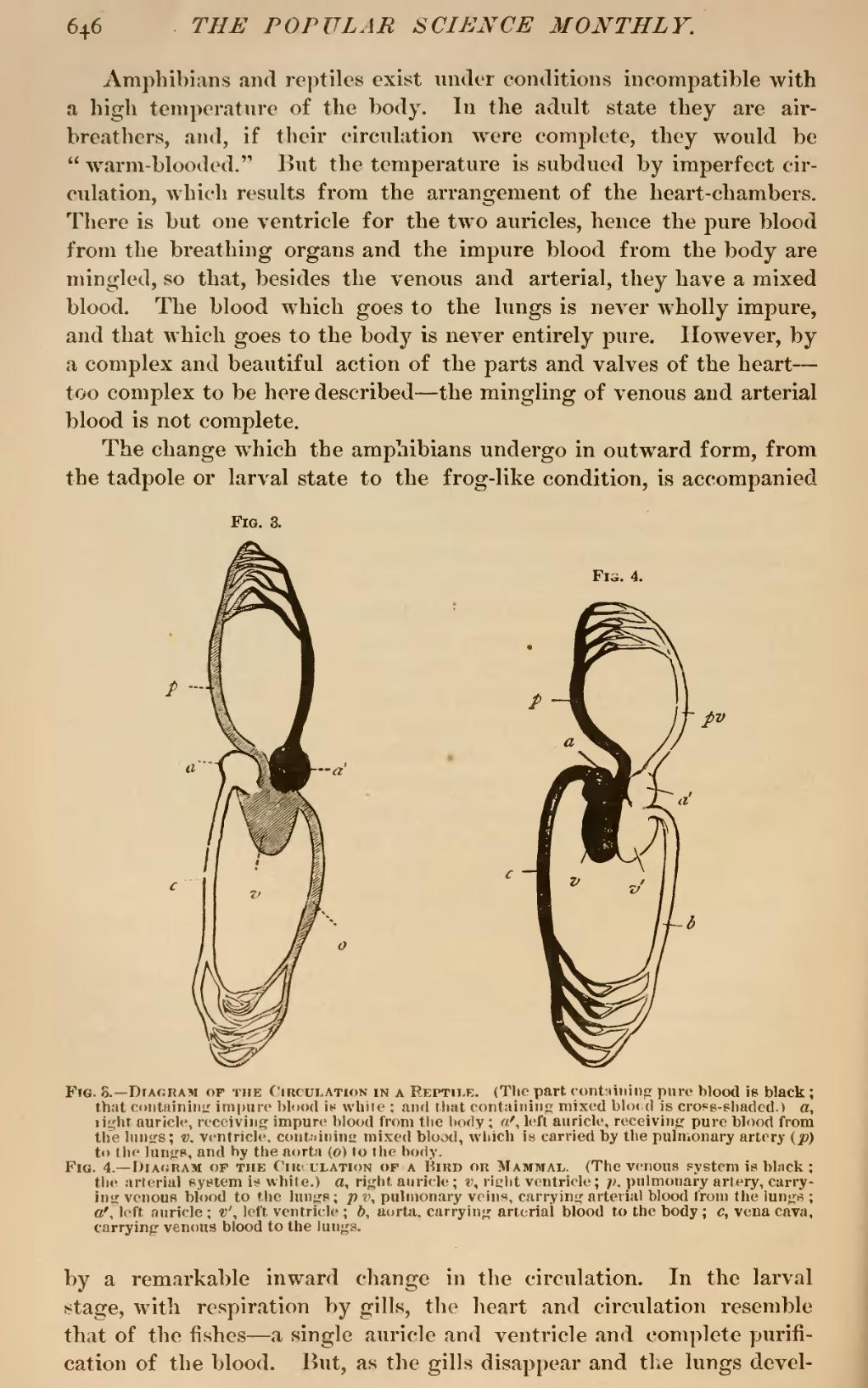Amphibians and reptiles exist under conditions incompatible with a high temperature of the body. In the adult state they are air-breathers, and, if their circulation were complete, they would be "warm-blooded." But the temperature is subdued by imperfect circulation, which results from the arrangement of the heart-chambers. There is but one ventricle for the two auricles, hence the pure blood from the breathing organs and the impure blood from the body are mingled, so that, besides the venous and arterial, they have a mixed blood. The blood which goes to the lungs is never wholly impure, and that which goes to the body is never entirely pure. However, by a complex and beautiful action of the parts and valves of the heart—too complex to be here described—the mingling of venous and arterial blood is not complete.
The change which the amphibians undergo in outward form, from the tadpole or larval state to the frog-like condition, is accompanied
| Fig. 3. | Fig. 4. |

by a remarkable inward change in the circulation. In the larval stage, with respiration by gills, the heart and circulation resemble that of the fishes—a single auricle and ventricle and complete purification of the blood. But, as the gills disappear and the lungs devel-
